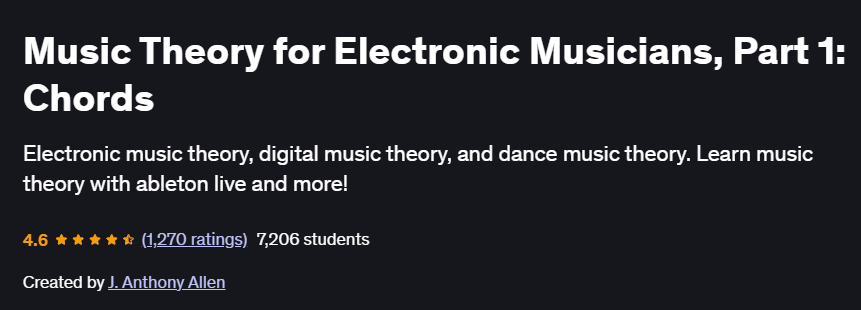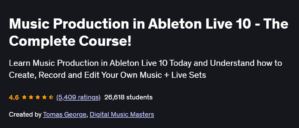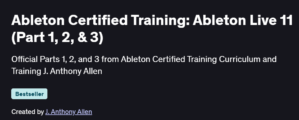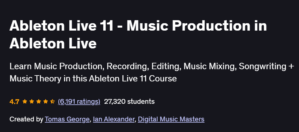What will you learn in Music Theory for Electronic Musicians, Part 1: Chords Course
Improve your tracks by building chords and melodies that work together
Understand and apply minor chords and 7th chords in your productions
Use the circle of fifths and moveable patterns to generate fresh ideas for melodies and basslines
Master the Piano Roll editor: octaves, black-key scales, and finding C/Middle C in your DAW
Build diatonic chord progressions, inversions, and use Roman numeral analysis to stay “in key”
Program Overview
Get certificate
Job Outlook
The average salary for a Music Producer in the U.S. is $61,681 per year
Payscale forecasts stable demand as electronic and pop music production continues to grow under streaming and live-performance trends
Skills in harmony, chord design, and DAW workflow are highly valued for roles in music production, sound design, and track mastering
Specification: Music Theory for Electronic Musicians, Part 1: Chords Course
|
FAQs
- No instrument skills are required to learn chord concepts.
- The course uses digital audio workstations (DAWs) to explain theory.
- Visual patterns on MIDI grids replace traditional notation.
- It’s perfect for producers who create directly in software.
- Optional keyboard demonstrations help connect theory to practice.
- Chords shape the emotional mood of your tracks.
- They form the backbone for basslines, melodies, and progressions.
- Understanding harmony speeds up creative decision-making.
- It helps you design more expressive synth layers.
- You’ll produce music that feels structured and intentional.
- Yes, all lessons use universal MIDI and theory concepts.
- The principles apply equally to any digital platform.
- Examples show how to use chord tools inside different DAWs.
- You’ll gain flexibility to adapt across multiple workflows.
- The course explains how chord progressions evoke emotion.
- You’ll learn how tension and release work in harmony.
- It helps you match melodies to harmonic structure naturally.
- Exercises guide you through crafting emotional sequences.
- You’ll stop guessing and start composing with purpose.
- Beginners will gain a clear foundation in chord structure.
- Intermediate producers can fill gaps in their theory knowledge.
- It clarifies advanced ideas like inversions and chord variations.
- Experienced creators often rediscover creative possibilities.
- Every level benefits from stronger musical understanding.





